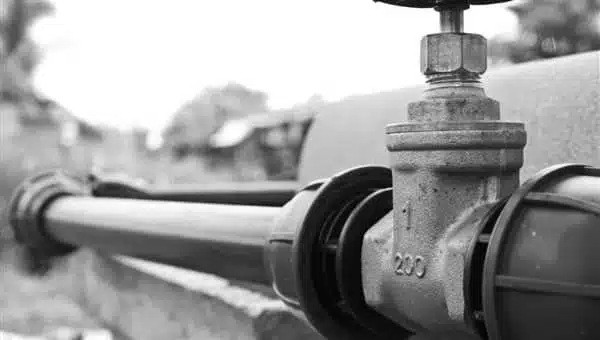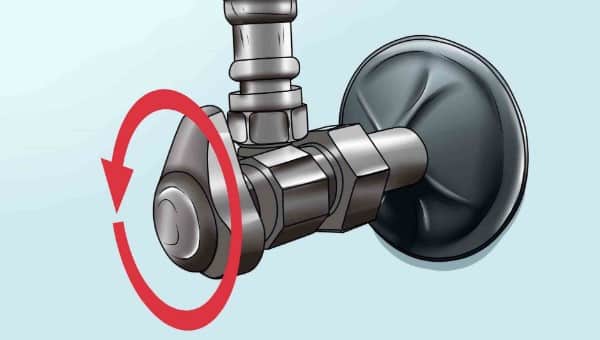Moving into a new home is an exciting chapter in life, but it can also come with a fair share of challenges. One of the aspects of homeownership that can prove tricky, particularly for first-time homeowners, is understanding your home’s water shut-off system. But fear not, this guide will help you master the water shut-off in your new home.
Table of Contents
The Importance of Knowing Your Water Shut Off System
Grasping how to halt the flow of water into your home is not just handy, but an absolute game-changer. Think of it as your superhero power in the face of plumbing catastrophes like a surging burst pipe or a stubborn, relentless leak. The ability to find your water shut off quickly and efficiently can spare you from a potential financial whirlpool and a mountain of stress.
Beyond just emergencies, there will be times when cutting off your water supply is necessary. Maybe you’re ready to dive into some DIY plumbing repairs, or perhaps you’re updating your space with new appliances. Either way, being able to navigate your water shut off system can make these tasks smoother and less disruptive to your daily routine.
In short, understanding your water shut off system is like having a map of your home’s vascular system. It enables you to prevent a minor leak from transforming into a major flood, keeping your home, belongings, and peace of mind safe from water damage. A little knowledge can indeed lead to significant power—and significant savings!
Locating Your Main Water Shut Off Valve
Discovering where your main water shut off valve resides is akin to finding the control center of your home’s water supply. This key player is often nestled within your home’s perimeter, in close proximity to the water meter.
If your home boasts a basement or crawlspace, cast your eyes towards the wall that greets the street – your main valve could be playing hide-and-seek there. Conversely, for slab homes, it may be cozying up near the water heater or the kitchen sink.
When it comes to appearances, the shut-off valve isn’t one-size-fits-all. It may take the form of a wheel or a lever. The wheel-type valve operates by a clockwise motion to cease water flow, while a lever needs only a quarter turn to accomplish the same task.
Think of these as your home’s tap, a simple turn can control the flow and save you from potential water-based troubles. Finding this water command center is your first step in mastering your home’s plumbing system. So go on, embark on your home treasure hunt and locate your main water shut off valve.

How to Shut Off Your Main Water Valve
Ah, so you’ve found the heart of your home’s water system – the main water shut off valve. Now, how do you actually put this newfound knowledge into action? For wheel-style valves, it’s a simple twist of the wheel in a clockwise direction (think: righty tighty). Keep spinning until the wheel refuses to budge any further.
For the lever-type counterparts, it’s not quite a full pirouette they need. A modest quarter turn, rendering the lever perpendicular to the pipeline it’s attached to, should do the trick. In both cases, you’re looking to completely cease the flow of water through these gates.
Remember, though, these valves aren’t your old-school music box that needs a forceful wind to play a tune. If you find the valve resisting your turn, don’t wage a war. It might simply be an issue of rust or a sign that it’s time for a replacement. Forcing it could lead to more harm than good. So, gently does it. Once you’ve mastered this step, you’ll be well on your way to taking command of your home’s water system!

Identifying Individual Shut-Off Valves
Your home isn’t just equipped with a central superhero—the main water shut-off valve—but also boasts a team of mini-heroes: individual shut-off valves for each plumbing fixture. These petite yet powerful valves help manage water supply to specific areas like sinks, toilets, and washing machines.
So if a leaky faucet is trying to play havoc in your home, you can shut off the water supply to that specific sink without causing a household-wide water outage. You’ll find these local heroes hitching a ride on the supply lines that lead to each fixture.
Getting them into action is straightforward. Similar to their central counterpart, you turn these valves in a clockwise direction to shut off the water supply. As a homeowner, getting acquainted with these valves is like having your very own Justice League on call, ready to step in and prevent localized water disasters. So, make the effort to introduce yourself to these individual shut-off valves and build your home’s network of defense against water damage.
Related Content: How to Shut Off Your Gas
Testing Your Shut-Off System Regularly
Just like your car needs a regular oil change, your water shut-off system craves a routine check-up. It’s a good rule of thumb to put your system to the test semi-annually, ensuring that everything is running smoothly and ready for action when you need it.
Your check-up protocol is straightforward: switch off the main water valve, then do a home tour checking various water outlets like faucets, showers, and toilets. If water continues to trickle out after a few minutes, it could be a red flag that your main valve isn’t fully doing its job.
A little preventative maintenance can go a long way in avoiding plumbing heartache down the road. Just as you’d keep the batteries in your smoke detectors fresh, be sure to keep your shut-off system in top-notch shape. So, mark your calendar and make these regular check-ups part of your homeowner routine.
When to Call a Professional
Just as there are moments for superhero capes, there are also times to pass the torch to a seasoned expert. Sure, it’s empowering to handle minor hiccups in your home’s water system, but some situations call for the seasoned hands of a professional plumber. If you find yourself in a game of hide-and-seek with your main water valve and are coming up empty-handed, it might be time to dial your trusty plumber.
Equally, a valve that feels more like an immovable boulder than a turnable wheel is a sign to get professional help. And if shutting off the valve has all the effectiveness of a dam made of swiss cheese, it’s definitely time to reach out to a plumbing pro.
FAQs
Is the water shut-off valve indoors or outdoors?
It was expected that a primary water shut-off valve would be installed in every residence during its construction. To address most emergencies or repairs, it is typically sufficient to simply shut off the corresponding inside valve.
Where is the main water shut-off?
The incoming water line typically passes through the foundation toward the front of your home. Follow this line to the water meter. The main water shut-off valve, which has a red or green handle or knob, should be located just past the meter.
Why can’t I find the water shutoff valve?
If your home is built on a slab, look in the garage or near the water heater for the shut-off valve. Next, look outside your house. If the water main shut-off valve is installed outside, it will be buried near the roadway. Look for a circular or rectangular metal cover that sits flush with the grass or sidewalk.
Conclusion
Ready for professional help? We’ll step in, assess the pickle you’re in, make any necessary tweaks, and even guide you through your home’s specific shut-off process. Like the trusty sidekick to your water shut-off hero, a professional plumber can help ensure your home stays safe and dry. Remember, you’re not just buying a service, you’re investing in peace of mind.
